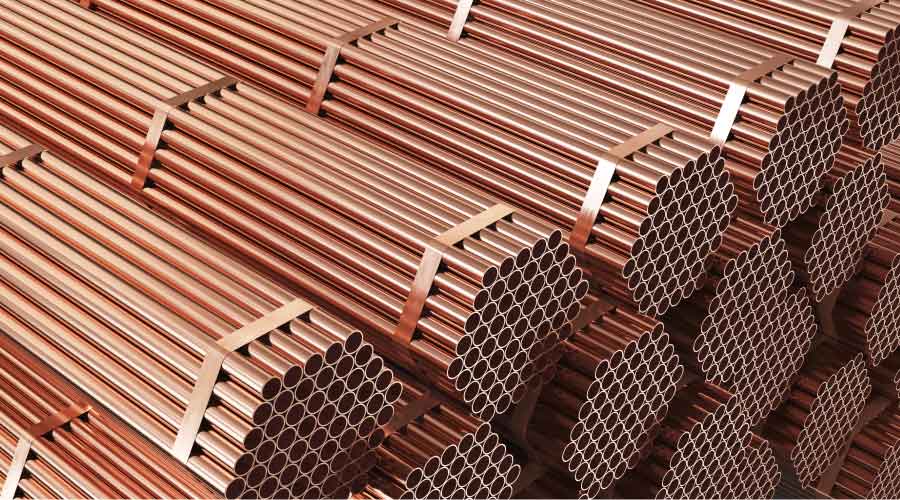Look Beyond Copper for Domestic Water Piping
Each of these three copper replacement options has pros and cons. Facility managers will need to weigh each based on their own unique facility situation.
By Tom Mikulasovich, contributing writer
When it comes to domestic water piping, copper is not necessarily the gold standard. Copper offers many advantages, and it is certainly tried-and-true, but it is expensive and it can develop pinhole leaks from corrosion. Promising alternatives include chlorinated polyvinyl chloride (CPVC pipe), stainless steel pipe, and cross-linked polyethylene (PEX) plastic pipe. Below are the benefits and drawbacks of all four options; owners and facility managers should consider them before making any plumbing design decisions.
Copper has been used for thousands of years and with good reason. It is lead-free, safe, reliable, and long-lasting: A copper system with recommended velocities and proper installation has an average lifespan of 70 to 80 years. Because it is completely impervious, it keeps outside chemicals from contaminating the water system. Copper’s durability enables it to withstand corrosion better than most other metal piping and enables it to handle high-pressure piping systems. Furthermore, when buried underground, it can withstand stresses from the ground moving or settling over time.
In the realm of sustainability, copper also scores well. It is easily recycled into new copper pipes, and in the process maintains 80 to 90 percent of its original value.
But copper has two notable downsides: One, it is one of the most expensive piping options for domestic water distribution systems. The expense includes the costs of materials and labor. Two, although it resists corrosion, it is not immune to it, especially in conditions of high velocity within the pipe. Consequently, it can develop pinhole leaks in the pipe wall.
Chlorinated Polyvinyl Chloride (CPVC) Pipe
CPVC has some advantages over copper, such as affordability and ease of cutting and assembly, although it may require extra hangers. With CPVC, there is no pitting, scaling, corrosion, or development of pinhole leaks, even when harsh water is used.
But copper outperforms CPVC in some areas. Copper’s lifespan is longer, for instance. CPVC lifespan is 50 to 75 years if installed properly. And copper can withstand exposure to freezing conditions better than CPVC can.
Exposure to heat, however, poses no problems for CPVC. And CPVC earns high marks for its recyclability; it can be reused in products such as floor coatings, cable trays, and speed bumps. Its energy efficiency stems from its thermal insulation, which helps reduce condensation and keeps water hot for longer periods of time compared to metallic pipe. Although its lifecycle isn’t as long as copper’s, 50 to 75 years is quite a good duration.
Stainless Steel Pipe
Stainless steel is typically the most expensive option for domestic water piping systems, depending on market conditions.
But stainless steel excels in corrosion resistance and in strength: It is, on average, 2.5 times stronger than copper piping. Even high velocities within the piping system don’t affect stainless steel’s performance. The upshot is significant reductions in water leaks and far easier maintenance.
A long lifespan — even beyond that of copper — is another benefit. Stainless steel lasts 80 to 100 years with proper installation. The lifespan, combined with the popularity of reuse and recycling, positions stainless steel as a highly sustainable material.
Cross-Linked Polyethylene (PEX) Plastic Pipe
This is the winner for affordability. PEX is far less expensive than copper or stainless steel, and because it requires fewer fittings than metal piping, it is much easier to install. Piping connections are simple to assemble and there’s no need for soldering. In addition, PEX’s light weight facilitates transport.
Other advantages: PEX is highly flexible, which reduces the probability of obstructions. It is resistant to scaling, chlorine, and corrosion — no pinhole leaks. PEX systems are quieter than copper piping systems when exposed to water hammer.
More plusses: In comparison to copper and CPVC, PEX is much more freeze-resistant. It can expand to accommodate water freezing in the pipe and then shrink back to its original diameter when the water unfreezes. Some PEX pipes are approved for installation in return air plenums. On the opposite end of the temperature spectrum, PEX also has lower thermal conductivity compared to copper. The result is that hot water within PEX pipes stays hotter longer.
But there is one important downside, especially as the world battles a climate crisis. Because PEX is plastic, it will end up in a landfill.
Conclusion
Copper is — and will probably always be — an excellent choice for water piping systems. But facility managers and design teams should carefully evaluate other options. As described above, CPVC, stainless steel, and PEX all offer distinct advantages and disadvantages compared to copper.
Generally, stainless steel is the most suitable for higher-pressure systems, such as those in buildings with 20 or more stories. In places with harsh water, such as Florida, copper is not a good fit: One of the three alternatives is better. But other situations are less clear-cut. In each instance, design teams should consider price, lifespan, maintenance, sustainability, labor costs, transportability, corrosion, and ease of assembly before making decisions that can significantly affect the comfort and safety of a building and the return on investment for property owners.
Tom Mikulasovich, CPD, LEED AP, is an associate partner at Syska Hennessy Group.
Related Topics:












